 |
|||
| Margaret Stewart ca. 1929 |
Apparently when you attended Trafalgar School for Girls which, we were happy to tell our mother, was Raglafart spelled backwards, the theory was that while you might plan healthy and nutritious meals, you would only step foot in the kitchen to tell someone else what to cook. But two World Wars erased kitchen help from memory. And what replaced them was a 50- year period stretching from 1920 to 1970 which food historian Paul Freedman described in his book “Ten Restaurants That Changed America” (Liveright/W.W. Norton 2016) as “The Dark Ages of American tastes, the unfortunate era of cottage cheese, canned fruit, Jell-O as a cooking ingredient and mayonnaise and marshmallows as salad decorations”. My mother, however, was not about to waste time decorating anything she served. Or for that matter, shopping for groceries. She never set foot in a grocery store when I was growing up. All the food in our house was ordered over the telephone and delivered from a distant market called Peterson’s.
What is amazing about her non-visits to any food store, is that she somehow managed to discover every possible frozen, pre-made, pre-cut, pre-packaged foodstuff. Convenience foods were her métier. To cut her some slack, Montreal, where we lived, was snowed in for a good 6 to 7 months a year and so frozen vegetables likely made a lot of sense. However, the total abandon with which my mother greeted the invention of every new kitchen shortcut made her what we in the Ad business called “an early adapter.” I shudder to think what dinner at our house would have been like if the household microwave oven had been in use before 1967. Instead, my mother, who much preferred the Cocktail Hour to the Dinner Hour, was given the moniker “The Crisper” as a good deal of the timing of our meals depended on the length of time it took to drink a second Martini.
 |
| Ruby Foo’s Chinese food never found its way to our door. |
As to Asian flavors (as in Pad Thai), they were completely absent from our home. Even though Montreal boasted a well-regarded Chinese restaurant called Ruby Foo’s, its take-out containers never darkened our door. The main reason for this was that my mother had a distinct distaste for rice. I am guessing that this may have been due to her inability to cook rice properly since she was resolute about never timing anything she cooked. But that’s just a guess. It wasn’t till I left home that I even ate so much as chop suey. Since then, I’ve developed a taste for virtually every Chinese style of cooking from Cantonese to Xian, my new cumin-scented favorite. I’ve stir-fried my way around a wok, love Bibimbap in all its guises, cannot eat enough Korean Fried Chicken and cannot wait to go back to Asia just to eat. But till then, recipes like this one for Pad Thai will keep me satisfied.
 |
| Annie Petito with her Pad Thai from Cook’s Illustrated |
Annie Petito of Cook’s Illustrated is responsible for this one. Like all recipes in Cook’s Illustrated, Anne has done all the heavy lifting so we don’t have to. She set out to create a Pad Thai that eliminated trips to an Asian market to be able to make the dish in the first place. She points out that Rice Noodles and Fish Sauce are staples in most supermarkets. But the one ingredient that she considers a must in making this dish is Tamarind Concentrate. This tart fruit comes in many forms – as a fresh pod, a brick of pulp and a powder but the best of the bunch is Tamarind Juice Concentrate.
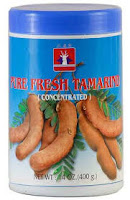 According to Ms. Petito, it is getting easier to find in both the Asian and Latin section of the supermarket. Confession Time: Mine does not stock it. But luck would have it that I was near Chinatown for lunch, and got both Tamarind and the all-essential beansprouts there. You can opt to order it on-line, of course. You can order it on Amazon for 8.49. I’m not going to go into all the ins and outs of Ms. Petito recipe development.
According to Ms. Petito, it is getting easier to find in both the Asian and Latin section of the supermarket. Confession Time: Mine does not stock it. But luck would have it that I was near Chinatown for lunch, and got both Tamarind and the all-essential beansprouts there. You can opt to order it on-line, of course. You can order it on Amazon for 8.49. I’m not going to go into all the ins and outs of Ms. Petito recipe development.I am going straight to her recipe which even my mother might like.
|
1/3
|
cup distilled white vinegar
|
|
1
|
serrano chile, stemmed and sliced into thin rings
|
|
Salt
|
|
Sugar
|
|
2
|
radishes, trimmed and cut into 1 1/2-inch by 1/4-inch matchsticks
|
|
8
|
ounces (1/4-inch-wide) rice noodles
|
|
3
|
tablespoons plus 2 teaspoons vegetable oil
|
|
1/4
|
cup fish sauce
|
|
3
|
tablespoons tamarind juice concentrate
|
|
1
|
pound large shrimp (26 to 30 per pound), peeled and deveined
|
|
4
|
scallions, white and light green parts minced, dark green parts cut into 1-inch lengths
|
|
1
|
garlic clove, minced
|
|
4
|
large eggs, beaten
|
|
4
|
ounces (2 cups) bean sprouts
|
|
1/4
|
cup roasted unsalted peanuts, chopped coarse
|
|
Lime wedges
|
2. FOR THE STIR-FRY: Combine 1/4 cup water, 1/2 teaspoon salt, and 1/4 teaspoon sugar in small bowl. Microwave until steaming, about 30 seconds. Add radishes and let stand for 15 minutes. Drain and pat dry with paper towels.
3. Bring 6 cups water to boil. Place noodles in large bowl. Pour boiling water over noodles. Stir, then let soak until noodles are almost tender, about 8 minutes, stirring once halfway through soaking. Drain noodles and rinse with cold water. Drain noodles well, then toss with 2 teaspoons oil.
4. Combine fish sauce, tamarind concentrate, and 3 tablespoons sugar in bowl and whisk until sugar is dissolved. Set sauce aside.
5. Remove tails from 4 shrimp. Cut shrimp in half lengthwise, then cut each half into 1/2-inch pieces. Toss shrimp pieces with 1/8 teaspoon salt and 1/8 teaspoon sugar. Arrange pieces in single layer on large plate and microwave at 50 percent power until shrimp are dried and have reduced in size by half, 4 to 5 minutes. (Check halfway through microwaving and separate any pieces that may have stuck together.)
6. Heat 2 teaspoons oil in 12-inch nonstick skillet over medium heat until shimmering. Add dried shrimp and cook, stirring frequently, until golden brown and crispy, 3 to 5 minutes. Transfer to large bowl.
8. Heat 2 teaspoons oil in now-empty skillet over high heat until just smoking. Add remaining whole shrimp and spread into even layer. Cook, without stirring, until shrimp turn opaque and brown around edges, 2 to 3 minutes, flipping halfway through cooking. Push shrimp to sides of skillet.
9. Add 2 teaspoons oil to center, then add eggs to center. Using rubber spatula, stir eggs gently and cook until set but still wet. Stir eggs into shrimp and continue to cook, breaking up large pieces of egg, until eggs are fully cooked, 30 to 60 seconds longer. Transfer shrimp-egg mixture to bowl with scallion-garlic mixture and dried shrimp.
9. Heat remaining 2 teaspoons oil in now-empty skillet over high heat until just smoking. Add noodles and sauce and toss with tongs to coat. Cook, stirring and tossing often, until noodles are tender and have absorbed sauce, 2 to 4 minutes. Transfer noodles to bowl with shrimp mixture. Add 2 teaspoons chile vinegar, drained radishes, scallion greens, and bean sprouts and toss to combine.
10. Transfer to platter and sprinkle with peanuts. Serve immediately, passing lime wedges and remaining chile vinegar separately.


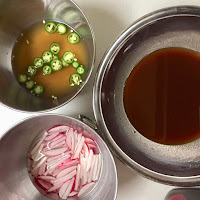

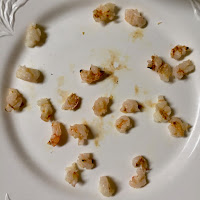
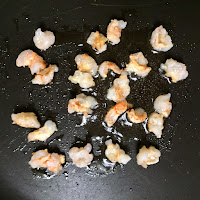


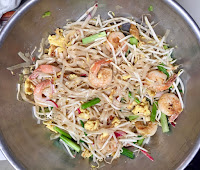
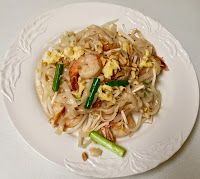











luv the pic of Aunt Margie.
This is a hard week for me. Dad died on the 29th of December 1995. And his birthday was December 25th. Fortunately, Alexander’s 50th birthday was December 24th. I hope we will always have a Christmas baby in the family. XOX M